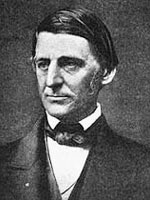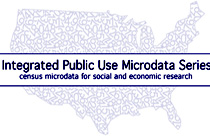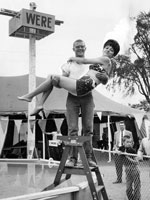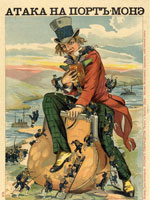On April 14, 1865, John Wilkes Booth became the first person to assassinate an American president when he shot and killed Abraham Lincoln in his box at Ford’s Theater in Washington. Using a .44 caliber derringer pistol—a small, easily concealed handgun—Booth fired a single shot (timed so that that the audience’s laughter would mask the report) into Lincoln’s brain at point-blank range before jumping to the stage and escaping into the night. After a two-week manhunt, Federal troops cornered Booth in a barn in Maryland, where a Union soldier shot him in the neck. Booth died two hours later.
A member of a famous acting family (many considered Booth’s father, Junius Brutus Booth, the finest Shakespearean actor of his generation, and Booth’s older brother, Edwin is commonly named among the greatest American actors of all time), John Wilkes Booth enjoyed a phenomenally successful stage career during the Civil War: by 1864, he earned $20,000 a year, at a time when the average Northern family earned around $300 annually. A Marylander by birth, Booth was an open Confederate sympathizer during the war. A supporter of slavery, Booth believed that Lincoln was determined to overthrow the Constitution and to destroy his beloved South.
After Lincoln’s reelection in November 1864, Booth devised a plan to kidnap the president and spirit him to Richmond, where he could be ransomed for some of the Confederate prisoners languishing in northern jails. Booth enlisted a group of friends from Washington to aid him in his attempt. That winter, Booth and his conspirators plotted a pair of elaborate plans to kidnap the president; the first involved capturing Lincoln in his box at Ford’s Theater and lowering the president to the stage with ropes. Booth ultimately gave up acting to focus on these schemes, and spent more than $10,000 to buy supplies to outfit his band of kidnappers. Neither of the kidnapping plans bore fruit—the second, a ploy on March 17 to capture Lincoln as he traveled in his carriage collapsed when the president changed his itinerary—and several of Booth’s conspirators ultimately left the group.
Now, by God, I’ll put him through. That is the last speech he will ever make
On the evening of April 11, the president stood on the White House balcony and delivered a speech to a small group gathered on the lawn. Two days earlier, Robert E. Lee had surrendered the Army of Northern Virginia at Appomattox Court House, and after four long years of struggle it had become clear that the Union cause would emerge from the war victorious. Lincoln’s speech that evening outlined some of his ideas about reconstructing the nation and bringing the defeated Confederate states back into the Union. Lincoln also indicated a wish to extend the franchise to some African-Americans—at the very least, those who had fought in the Union ranks during the war—and expressed a desire that the southern states would extend the vote to literate blacks, as well. Booth stood in the audience for the speech, and this notion seems to have amplified his rage at Lincoln. “That means nigger citizenship,” he told Lewis Powell, one of his band of conspirators. “Now, by God, I’ll put him through. That is the last speech he will ever make.”
Three days later Booth made good on his promise. Upon learning that Lincoln and his wife intended to see the play Our American Cousin at Ford’s Theater with commanding general Ulysses S. Grant, Booth used his actor’s connections there to gain access to the president’s box. Finally rejecting the notion of kidnapping, Booth now planned to assassinate the president along with top officials his administration: besides Lincoln and General Grant, Secretary of State William Seward and Vice President Andrew Johnson were to be killed the same night by other members of Booth’s gang. Booth appears to have plotted the murders in the belief that the simultaneous assassination of four top officials would throw the North and the Republican Party into chaos long enough for the Confederacy to reassemble itself.
The other parts of Booth’s plan did not come to fruition. General Grant declined the invitation to see the play; Union officer Henry Rathbone took his place. While Booth waited for his opportunity to assassinate the president at Ford’s Theater, two of his co-conspirators journeyed to their assigned targets. Lewis Powell gained entry to Secretary of State’s home, where a bedridden Seward lay recuperating from a carriage accident; Powell stabbed him several times, but none of the blows was mortal. At the same time, another conspirator, George Azterodt, made his way to the hotel where Vice President Johnson was lodging. Armed with a gun and a knife, Azterodt detoured to the hotel saloon, where he got drunk and lost his nerve. He left the bar without confronting Johnson and discarded his knife in the streets of Washington.
Only one of the four intended victims of Booth’s plot was killed, but Lincoln was by far the biggest prize. With Lincoln’s death, Andrew Johnson ascended to the presidency, and the nation lost the one man that most contemporaries, and most American historians, believed best qualified to “bind up the nation’s wounds” after four brutal years of war.




